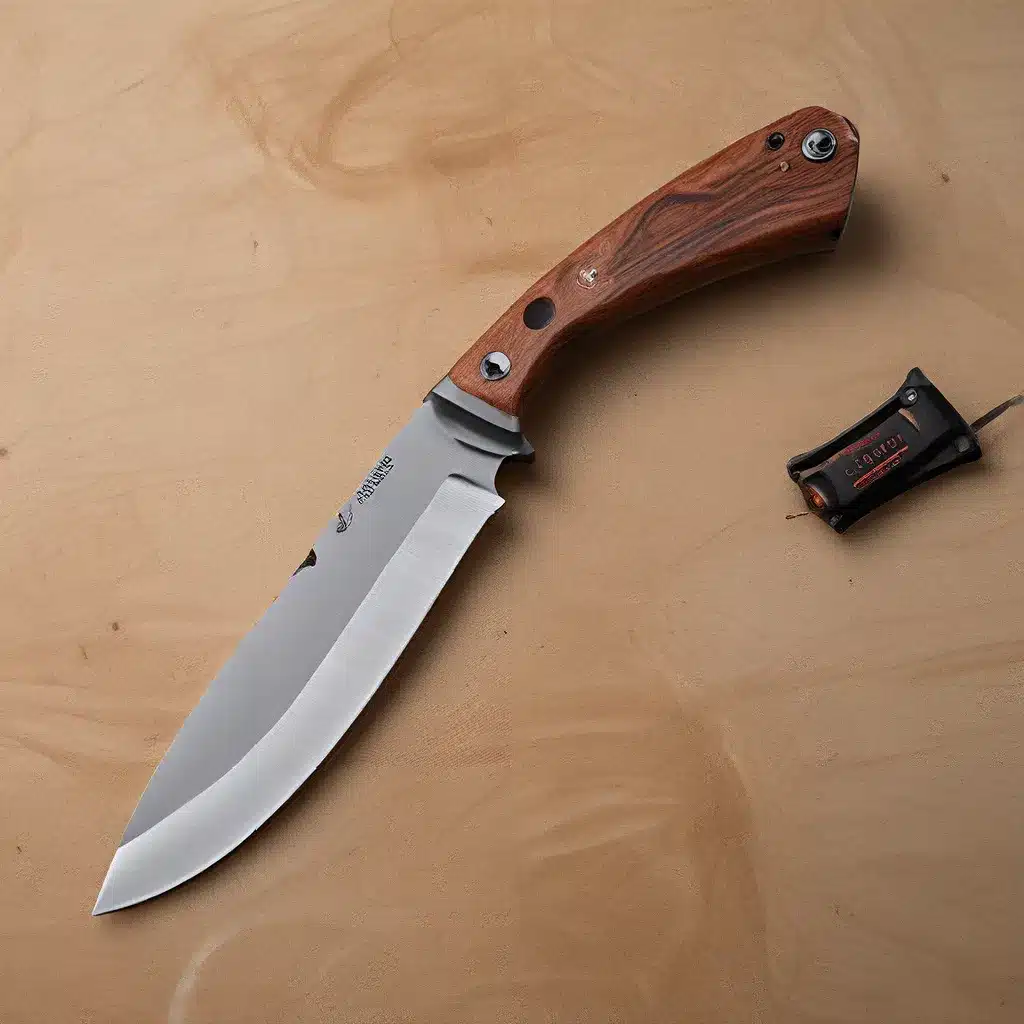
From Tradition to Innovation
I’ve always been fascinated by the evolution of knife design – how these essential tools have transformed from simple functional implements to veritable works of art. As a passionate home chef, I’ve experimented with countless knives, each with their own unique characteristics. But it wasn’t until I delved deeper into the industry that I truly understood the incredible creativity and boundary-pushing innovation happening in the world of knife design.
It all started when I set out to find the perfect chef’s knife for my kitchen. I tested over 20 different models, and while some were a breeze to sharpen, they lacked the balance and style I craved. Others looked and cut beautifully, but were tough to maintain. Frustrated, I thought – why not make my own? Little did I know, that decision would lead me on a journey of discovery, uncovering the stunning advancements transforming the knife industry.
Pushing the Boundaries of Tradition
The team at Assio Engvall, a Swedish knife brand with a vision to “revolutionize the culinary industry,” understood my predicament all too well. As they set out to create their own exceptional chef’s knife, the Skarp, they embarked on a mission to blend traditional craftsmanship with cutting-edge (pun intended) design.
“We unwaveringly prioritize quality in every aspect of our products,” the Assio Engvall team told me. “From the materials we use to the craftsmanship employed, we ensure that every detail reflects a commitment to excellence.” This relentless focus on quality is evident in the Skarp’s stunning aesthetic, but more importantly, in its exceptional performance.
What sets Assio Engvall apart is their unwavering drive to push the boundaries of traditional knife design. They didn’t simply follow trends – they set them. “Our designs are carefully curated to blend aesthetics with functionality, resulting in products that not only perform exceptionally but also stand out in terms of style,” they explained.
Herman Knives echoes this sentiment, with their founder Kristoffer Engvall stating, “We are passionate about food and cooking, and we believe that our products can inspire creativity and bring joy to the kitchen.” This commitment to innovation and creativity is at the heart of the modern knife industry.
Blending Form and Function
One of the most remarkable aspects of contemporary knife design is the seamless integration of form and function. Gone are the days of utilitarian blades – today’s knives are works of art that deliver unparalleled performance.
Take the Skarp, for example. Inspired by the precision and elegance of Japanese blade design, this chef’s knife is a testament to meticulous craftsmanship. “Each product is a testament to meticulous craftsmanship,” the Assio Engvall team shared. “We believe in creating items that go beyond utility to become pieces of art. This dedication to craftsmanship elevates our brand to a premium status.”
But it’s not just about aesthetics – the Skarp’s cutting-edge design (pun intended, again) ensures that it performs as beautifully as it looks. “It’s a breeze to sharpen, cuts like a dream, and feels perfectly balanced,” the team proudly shared. This fusion of form and function is a hallmark of the best knife designs in the industry.
Embracing Innovation Through Technology
As the knife industry has evolved, so too have the tools and technologies used in its design and production. Baucor, a leading manufacturer of industrial blades, has been at the forefront of this technological revolution, leveraging cutting-edge prototyping techniques to push the boundaries of what’s possible.
“By embracing cutting-edge technologies such as 3D printing and CNC machining, Baucor has enhanced its prototyping capabilities significantly,” the company shared. “The integration of these technologies not only speeds up the prototyping process but also ensures precision and accuracy in every blade design.”
This technological edge has allowed Baucor to deliver prototypes faster and with greater accuracy, enabling their clients to experiment with complex designs and push the limits of what’s possible. “Imagination thrives in situations without restrictions on what can be investigated or tried,” the company noted. “That leads to novel methods of tackling problems and creates opportunities for ground-breaking goods.”
Sustainability and Ethics in Knife Design
As the knife industry continues to evolve, it’s not just about pushing the boundaries of design and performance – it’s also about considering the ethical and environmental impact of these products. Assio Engvall recognizes this, committing to “sustainability and responsible sourcing of materials” in their pursuit of creating exceptional knives.
“Beyond crafting exceptional products, our brand prioritizes a customer-centric approach,” the team shared. “Every interaction with Assio Engvall mirrors the same level of excellence evident in our products, making us a brand to recognize.”
This focus on sustainability and ethical practices extends to the manufacturing process as well. Baucor, for example, emphasizes the importance of “ensuring that the materials used in the prototype are sustainable and environmentally friendly” and maintaining “strict guidelines for the well-being of its employees.”
As consumers become increasingly conscious of the impact of their purchases, this commitment to environmental and social responsibility will undoubtedly become a key differentiator in the knife industry.
The Future of Knife Design: Limitless Possibilities
As I’ve delved deeper into the world of knife design, I’ve been continually amazed by the creativity and innovation driving this industry forward. From the meticulous craftsmanship of Assio Engvall to the technological edge of Baucor, it’s clear that the boundaries of what’s possible are constantly being pushed.
Looking ahead, I can’t help but wonder what the future holds for knife design. Will we see even more breathtaking integrations of form and function? How will sustainability and ethics continue to shape the industry? And what new technologies and materials will emerge to revolutionize the way we interact with these essential tools?
One thing is certain – the passion and dedication of those in the knife industry ensures that the creative possibilities are truly limitless. As a home chef, I can’t wait to see what the future holds, and to continue exploring the cutting-edge of knife design.


